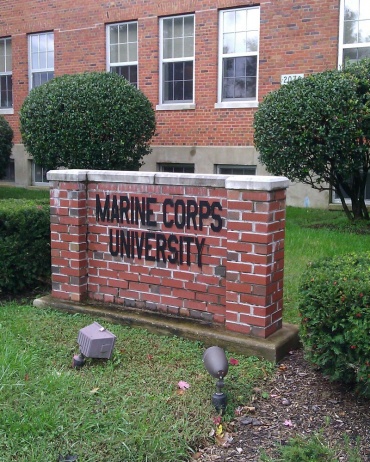More on Boyd & Beyond II and Boydian Theory
Wednesday, October 19th, 2011Two posts of note:
USNI Blog (Lucien Gauthier) – Training Sailors to be Autodidactic
….The conference spent a lot of time on the first half of the OODA-Loop, Observing and Orienting. At some point I became convinced that the type of Sailor we need is one that is a “situational autodidact”. Major Marcus Mainz, USMC, during his presentation made the brilliant comment that “training is for the known, education is for the unknown” in this sense, the spirit in which we must educate our Sailors must be towards making them capable of educating their self as needed when the unknown presents itself to them.
….For Sailors to take greater advantage of their experiences, they need to actively question their actions. By this, I mean that a person analyses a question more than they do a statement. But, it has been my experience that when someone recants an experience they had, it is a rare thing to hear someone say anything in terms of ‘why’ they did something. Much more often someone only tells the ‘what’ of their actions. Think of the Socratic Method, where Socrates would answer his students questions with another question. A Sailor who has internalized such a ‘Socratic process’ would be in a position to provide more cogent feedback as well as learn from their mistakes more often than we do today.
What I am saying is not that the training we offer Sailors falls short of its objectives as they stand today. But, that the spirit of the training is not where it needs to be-we focus our objectives too much on acting rather than orienting. The training our Sailors receive are based on concrete and testable objectives that can be measured, quantified and turned into metrics, that fit well into powerpoint. We do no help Sailors to become autodidactic-we are not training them to become students of their environment, but rather students of their school house.
We start to approach training Sailors to be autodidacts of their environment in the Operational Risk Management training we receive (One thing about ORM: It is Boyd’s OODA-Loop operationalized. The Navy has totally ripped off Boyd, and yet we never mention his name outside of the Warfare Universities-shame on us). We need more and deeper training on ORM and how this method applies to everything we do, whether we consciously realize it or not. In giving this deeper level or ORM, we should also find Sailors able to be more articulate of the process they’ve gone through. Thereby becoming able to better train others of their experiences….
Naval affairs is not my bailwick, but my understanding of following online discussions by experts in the field like General Robert Scales, is that Professional Military Education across all the services is a) in need of significant reform and b) is facing a future of restricted budgets and possible deep cuts. My only firsthand knowledge of PME comes from a brief stint in June at The Army War College, courtesy of Dr. Steve Metz. The AWC curriculum was explained to me in detail by Col. Bill Lord, and while they were hitting the right notes in terms of trying to inculcate a strategic epistemology, the time frame allowed for doing so is extremely compressed.
Fast Transients –Boyd’s Conceptual Spiral – New Edition
This is from Dr. Chet Richards as well as Chuck Spinney….
Download Conceptual Spiral (152 KB PDF), Boyd’s take on the origin and importance of novelty:
Novelty is not only produced by the practice of science/engineering and the pursuit of technology, it is also produced by the forces of nature, by our own thinking and doing as well as by others. Furthermore, novelty is produced continuously, if somewhat erratically or haphazardly. Now, in order to thrive and grow in such a world, we must match our thinking and doing, hence our orientation, with that emerging novelty. (28)
Adds the original page numbers, which may seem a little odd because for readability this edition spreads several of Boyd’s originals over two or even three pages. All of these will have the same number.
We are wired to crave and be attracted to novelty, it sets us thinking and generates insights and stimulates our creativity.



